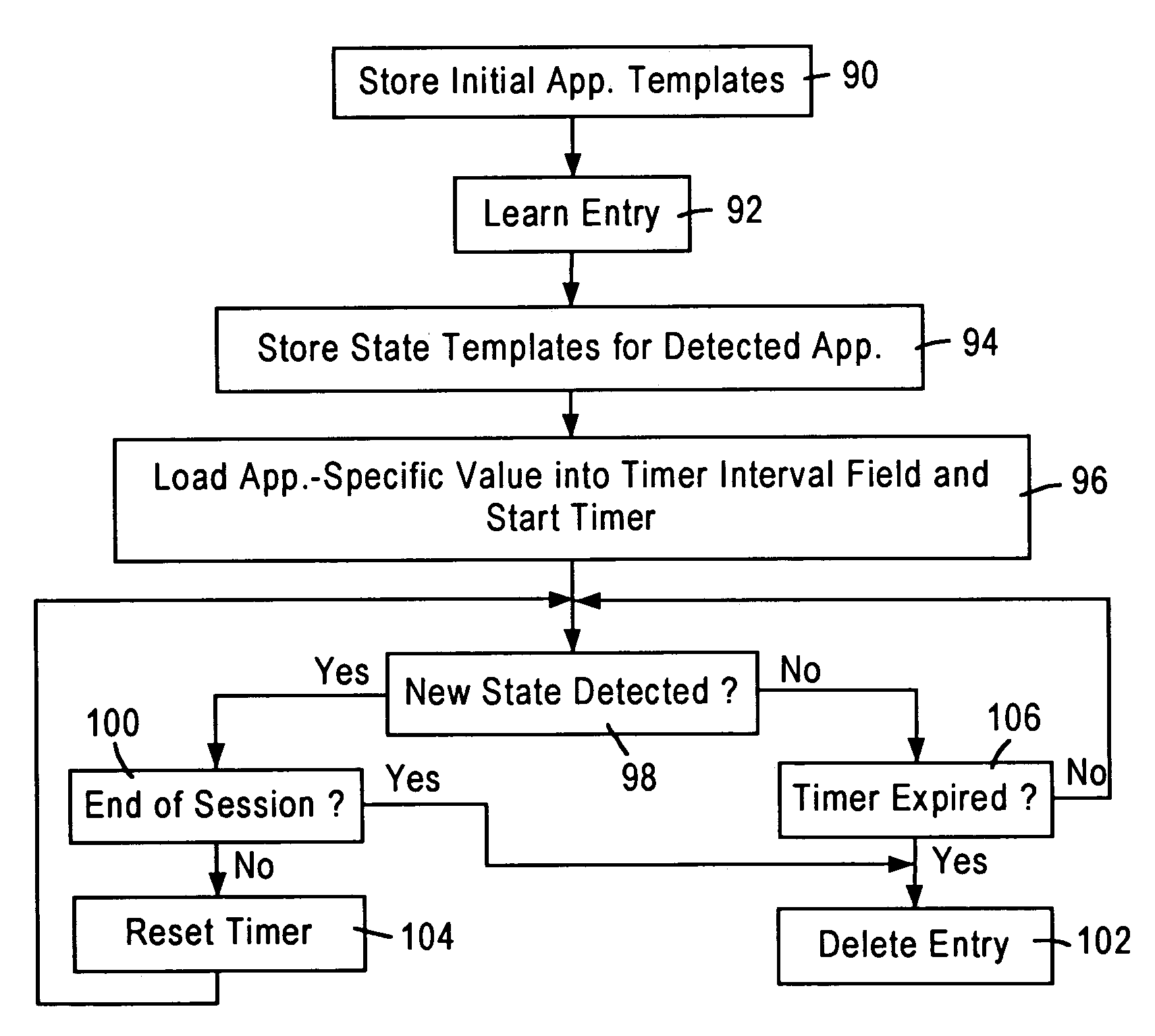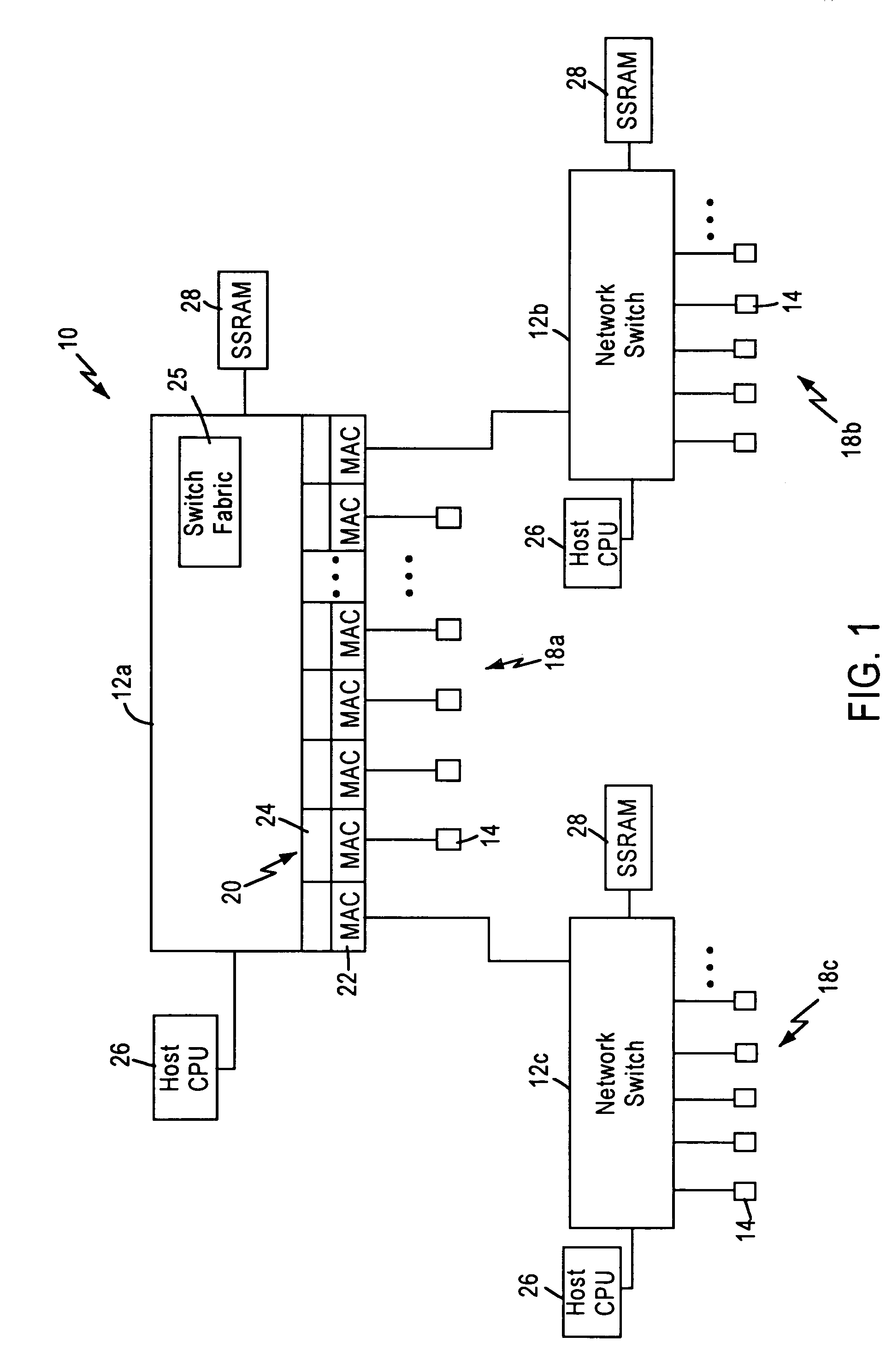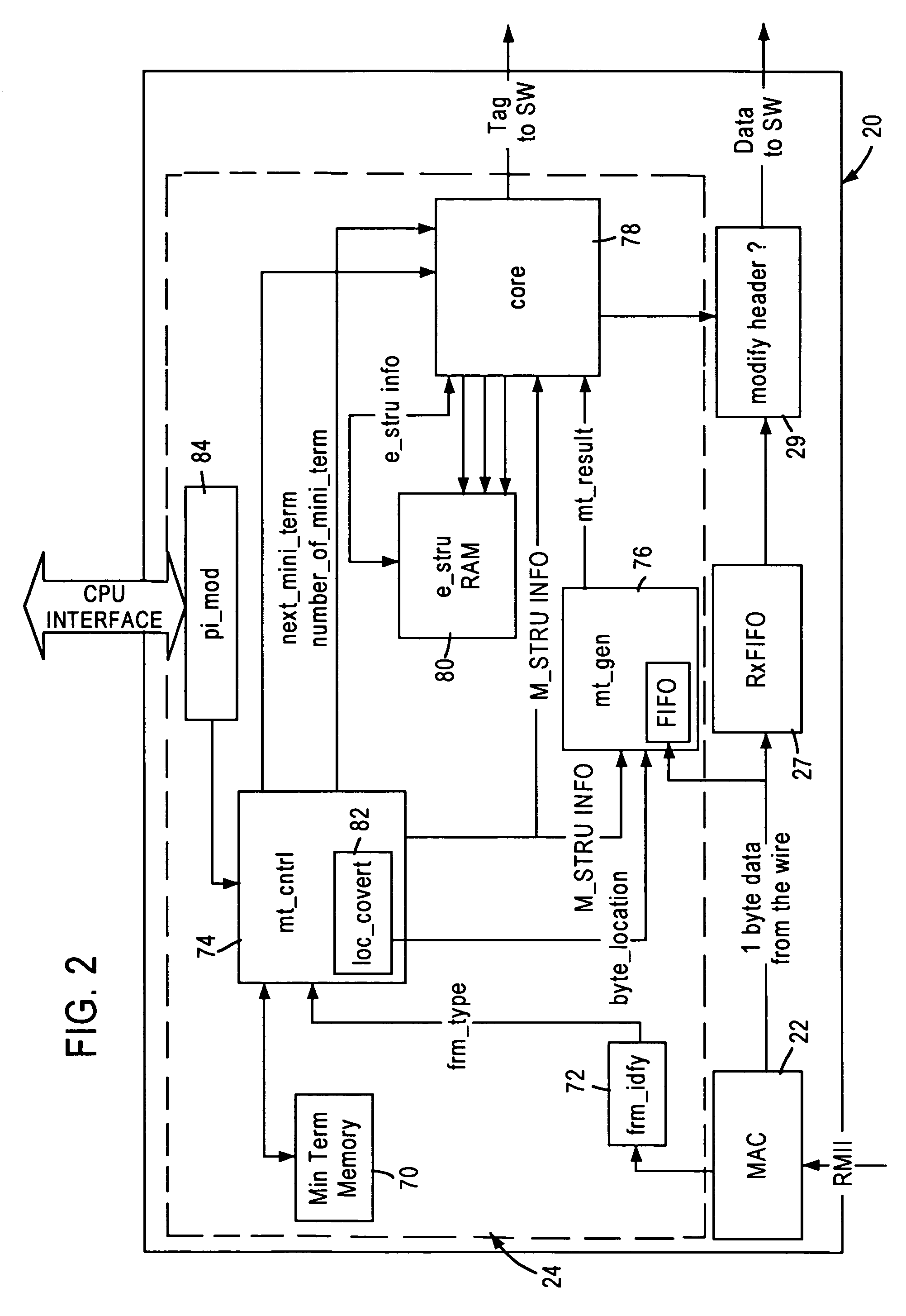Selective address table aging in a network switch based on application state determined from a received data packet
a network switch and data packet technology, applied in data switching networks, bus networks, digital transmission, etc., can solve problems such as wasting network switch resources, affecting data packet transmission speed, so as to minimize relearning
- Summary
- Abstract
- Description
- Claims
- Application Information
AI Technical Summary
Benefits of technology
Problems solved by technology
Method used
Image
Examples
Embodiment Construction
[0022]The disclosed embodiment is directed to an arrangement in an integrated network switch for generating application-based aging intervals for network switch address table entries, and selectively deleting an address entry based on an application state determined for a prescribed network application from a received layer 2 data packet. The detection of a prescribed network application from a received layer 2 data packet, as well as the application state for the prescribed network application, is performed by a packet classifier module within the network switch port having received the layer 2 data packet. A description will first be provided of the network switch architecture and the packet classifier, followed by a description of the application-based aging of the network switch address entries.
[0023]FIG. 1 is a block diagram illustrating a packet switched network 10, such as an Ethernet (IEEE 802.3) network. The packet switched network includes integrated (i.e., single chip) mu...
PUM
 Login to View More
Login to View More Abstract
Description
Claims
Application Information
 Login to View More
Login to View More - R&D
- Intellectual Property
- Life Sciences
- Materials
- Tech Scout
- Unparalleled Data Quality
- Higher Quality Content
- 60% Fewer Hallucinations
Browse by: Latest US Patents, China's latest patents, Technical Efficacy Thesaurus, Application Domain, Technology Topic, Popular Technical Reports.
© 2025 PatSnap. All rights reserved.Legal|Privacy policy|Modern Slavery Act Transparency Statement|Sitemap|About US| Contact US: help@patsnap.com



